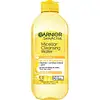What's inside
What's inside
 Key Ingredients
Key Ingredients

 Benefits
Benefits

 Concerns
Concerns

No concerns
 Ingredients Side-by-side
Ingredients Side-by-side

Water
Skin ConditioningCyclopentasiloxane
EmollientGlycerin
HumectantEthylhexyl Methoxycinnamate
UV AbsorberZinc Oxide
Cosmetic ColorantPhenylbenzimidazole Sulfonic Acid
UV AbsorberDimethicone Crosspolymer
Emulsion StabilisingPotassium Chloride
PEG-10 Dimethicone
Skin ConditioningCaprylic/Capric Triglyceride
MaskingNiacinamide
SmoothingSodium Hydroxide
BufferingMagnesium Sulfate
Cyclomethicone
EmollientParfum
MaskingPhenoxyethanol
PreservativeTitanium Dioxide
Cosmetic ColorantDisteardimonium Hectorite
StabilisingTriethoxycaprylylsilane
Methylparaben
PreservativeSucrose Distearate
EmollientAllantoin
Skin ConditioningCystine
MaskingGlycine
BufferingTocopheryl Acetate
AntioxidantPropylparaben
PreservativePotassium Hydroxide
BufferingSodium PCA
HumectantDisodium EDTA
Sodium Carbonate
BufferingBHT
AntioxidantAluminum Hydroxide
EmollientDimethicone
EmollientSodium Chloride
MaskingCI 14700
Cosmetic ColorantWater, Cyclopentasiloxane, Glycerin, Ethylhexyl Methoxycinnamate, Zinc Oxide, Phenylbenzimidazole Sulfonic Acid, Dimethicone Crosspolymer, Potassium Chloride, PEG-10 Dimethicone, Caprylic/Capric Triglyceride, Niacinamide, Sodium Hydroxide, Magnesium Sulfate, Cyclomethicone, Parfum, Phenoxyethanol, Titanium Dioxide, Disteardimonium Hectorite, Triethoxycaprylylsilane, Methylparaben, Sucrose Distearate, Allantoin, Cystine, Glycine, Tocopheryl Acetate, Propylparaben, Potassium Hydroxide, Sodium PCA, Disodium EDTA, Sodium Carbonate, BHT, Aluminum Hydroxide, Dimethicone, Sodium Chloride, CI 14700
 Reviews
Reviews

Ingredients Explained
These ingredients are found in both products.
Ingredients higher up in an ingredient list are typically present in a larger amount.
BHT is a synthetic antioxidant and preservative.
As an antioxidant, it helps your body fight off free-radicals. Free-radicals are molecules that may damage your skin cells.
As a preservative, it is used to stabilize products and prevent them from degrading. Specifically, BHT prevents degradation from oxidation.
The concerns related to BHT come from oral studies; this ingredient is currently allowed for use by both the FDA and EU.
However, it was recently restricted for use in the UK as of April 2024.
Learn more about BHTDisodium EDTA plays a role in making products more stable by aiding other preservatives.
It is a chelating agent, meaning it neutralizes metal ions that may be found in a product.
Disodium EDTA is a salt of edetic acid and is found to be safe in cosmetic ingredients.
Learn more about Disodium EDTAGlycerin is already naturally found in your skin. It helps moisturize and protect your skin.
A study from 2016 found glycerin to be more effective as a humectant than AHAs and hyaluronic acid.
As a humectant, it helps the skin stay hydrated by pulling moisture to your skin. The low molecular weight of glycerin allows it to pull moisture into the deeper layers of your skin.
Hydrated skin improves your skin barrier; Your skin barrier helps protect against irritants and bacteria.
Glycerin has also been found to have antimicrobial and antiviral properties. Due to these properties, glycerin is often used in wound and burn treatments.
In cosmetics, glycerin is usually derived from plants such as soybean or palm. However, it can also be sourced from animals, such as tallow or animal fat.
This ingredient is organic, colorless, odorless, and non-toxic.
Glycerin is the name for this ingredient in American English. British English uses Glycerol/Glycerine.
Learn more about GlycerinWater. It's the most common cosmetic ingredient of all. You'll usually see it at the top of ingredient lists, meaning that it makes up the largest part of the product.
So why is it so popular? Water most often acts as a solvent - this means that it helps dissolve other ingredients into the formulation.
You'll also recognize water as that liquid we all need to stay alive. If you see this, drink a glass of water. Stay hydrated!
Learn more about Water